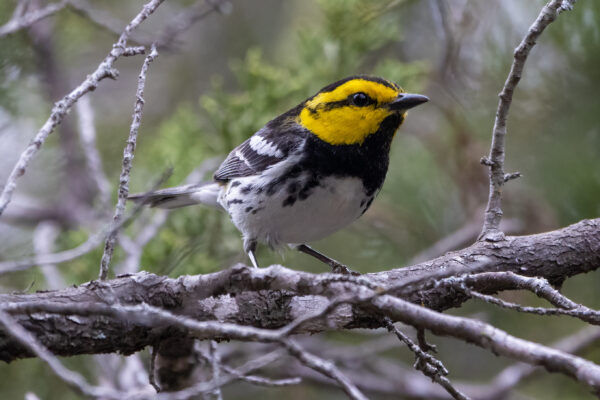Submitted by Krissy Dunn
Photo: Raven Ridge Wildlife Center, PA.
Birds face a number of human-caused hazards, including habitat loss, outdoor cats, building collisions, and rodenticides. Yet, an often-overlooked threat lurks in offices, homes, gardens and parks: glue traps. Awareness is slowly growing about these brutal devices, and, as the Austin Monitor reported, the Austin Animal Advisory Commission recently discussed a potential policy to remove glue traps from city operations due to the harm they cause.
Fortunately, momentum is growing to end the use of glue traps. Major companies like Target, Walgreens, and CVS have stopped selling glue traps. More importantly, everyone can act to spare birds and other animals from the gruesome effects of glue traps. By never using glue traps and raising awareness, you may spare a wild bird a painful, premature death.
Glue traps are intended to kill rats, mice, and insects by using a sticky adhesive on flat boards. But in real life, glue traps are indiscriminate. Any animal that encounters one, including wild birds, will likely suffer a prolonged and painful death.
The Wildlife Center of Virginia maintains the WILD-One database, which has documented 179 species of wildlife caught on glue traps, including approximately 100 species of wild birds which are protected from being killed by the Migratory Bird Act. On social media, Texas wildlife rehabilitators have shared moving stories of birds ensnared in glue traps and urged the public to choose humane options instead.
Helen Laughlin, a licensed wildlife rehabilitator, is the President of All Things Wild Rehabilitation in Georgetown, Texas, which cares for over 3,500 wild animals each year. Of the animals brought in on glue traps, wrens are frequent victims. Helen says, “Glue traps are a death sentence for most birds and small mammals. I have to say that most people have glue traps because an extermination company has put them down and are horrified when they find an animal on the trap. We always ask people who bring in animals on glue traps to throw the traps away and never use them again.” When disposing the traps, fold them sticky side in, AND cover them with newspaper or a bag to ensure no adhesive is exposed.
In 2021, the Lehigh Valley Audubon Society in Pennsylvania co-authored a report with wildlife rehabilitators following a surge in birds caught in glue traps intended for lanternflies. The report showed that glue-trap bycatch in Pennsylvania spiked in 2020, with approximately 400 recorded cases. Only around 25 percent of the ensnared animals could be saved.
Glue traps also pose a health hazard to humans, according to the Centers for Disease Control and Prevention. The CDC advises people never to use glue traps, as the animals who become stuck produce urine and feces that may transmit disease.
Glue traps are also ineffective, failing to address the source of the problem. A 2016 study found that, within four weeks of ceasing trapping, a rat population had rebounded to its original size, given that the environment remained hospitable to them. The only way to solve an infestation is to make the area unattractive and inaccessible, which includes sealing entry points and removing all food and water sources. Entry points can be identified and sealed thorough visual inspection or even using motion-detection cameras. The National Park Service suggests using non-toxic powder to track rodent footsteps. Once the environment is addressed, remaining residents can be evacuated through humane and bird-friendly options, including scent repellents and live traps with frequent monitoring.
Special thanks to Animal Advisory Commission member Whitney Holt for her work on this important issue.




